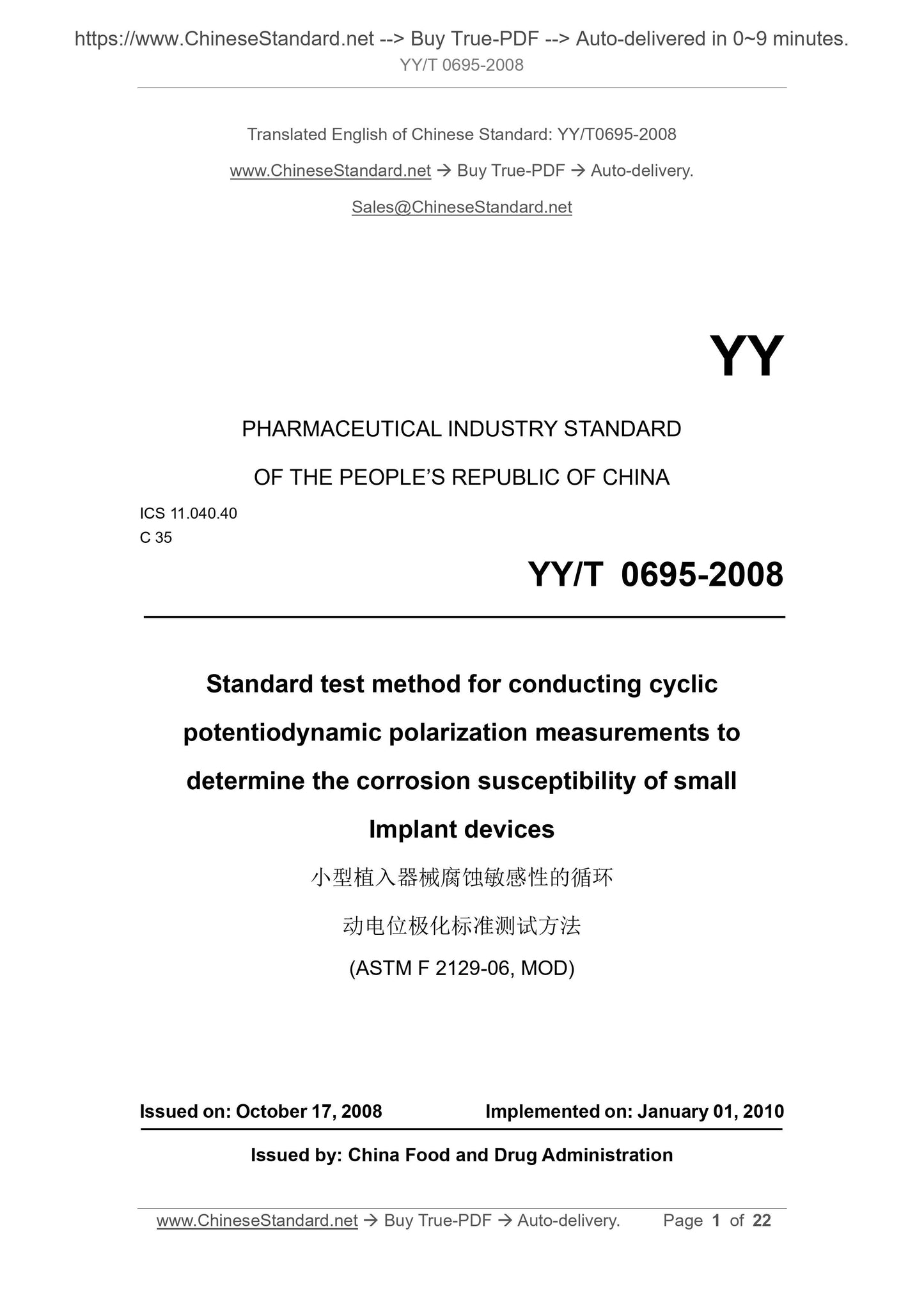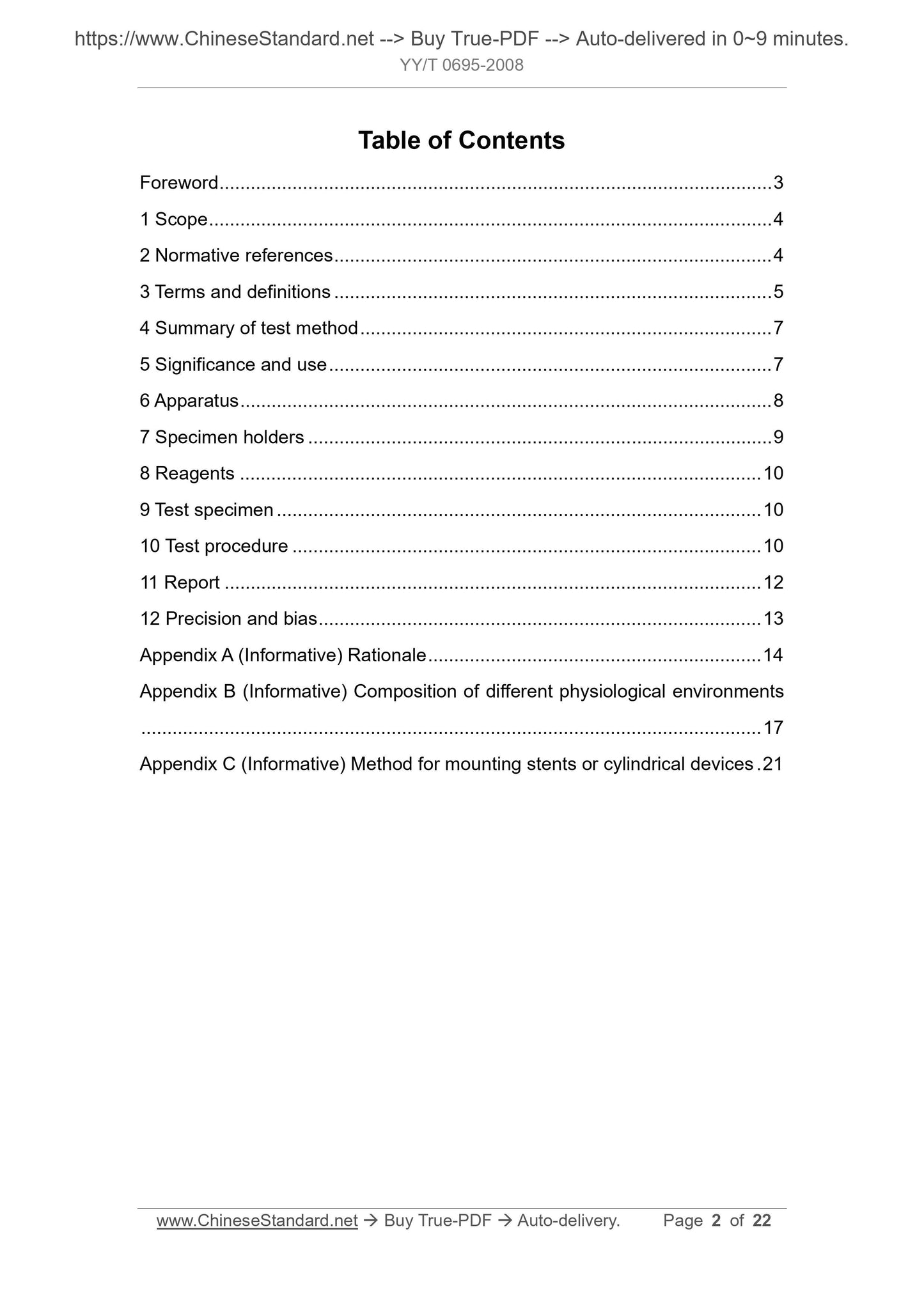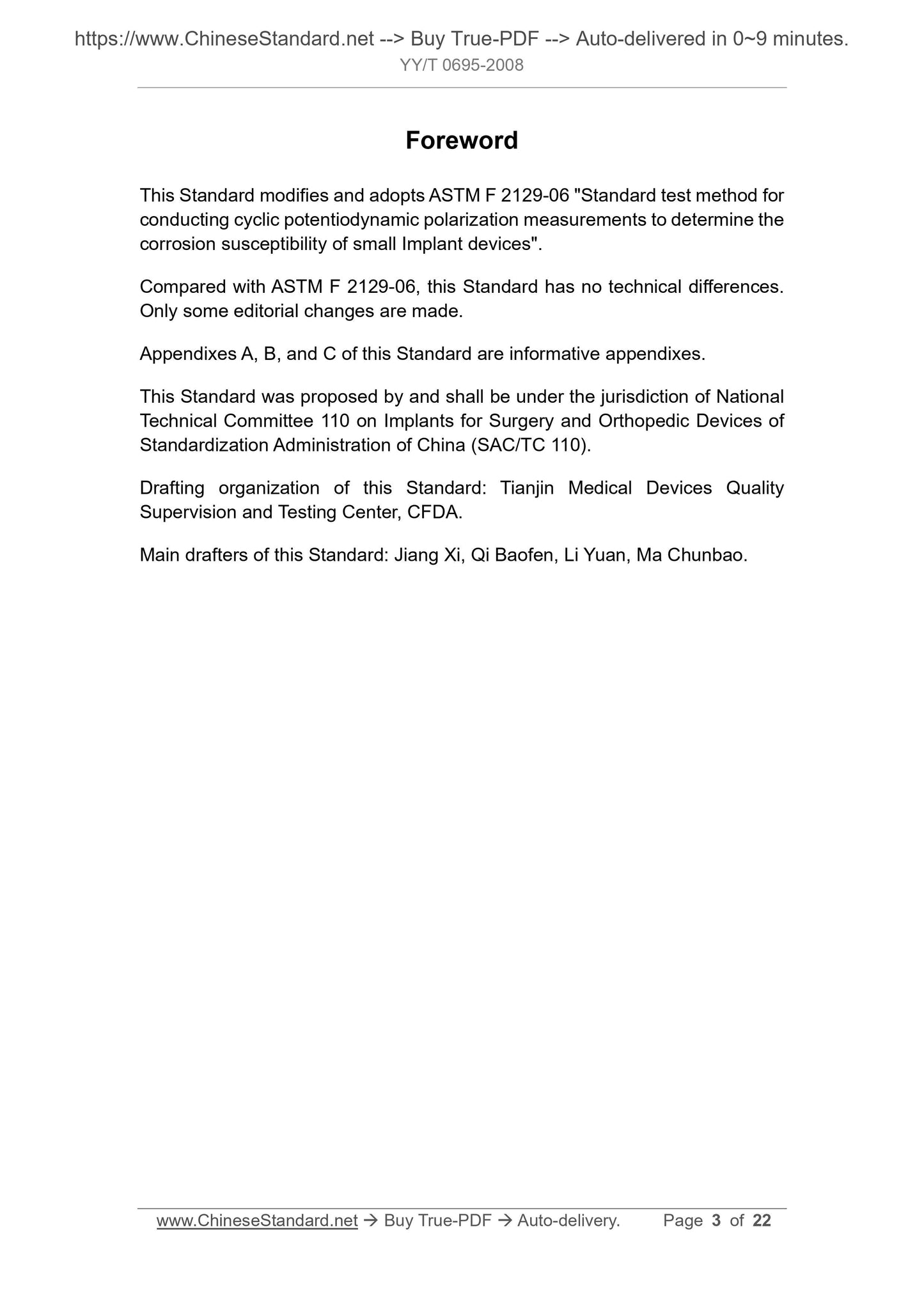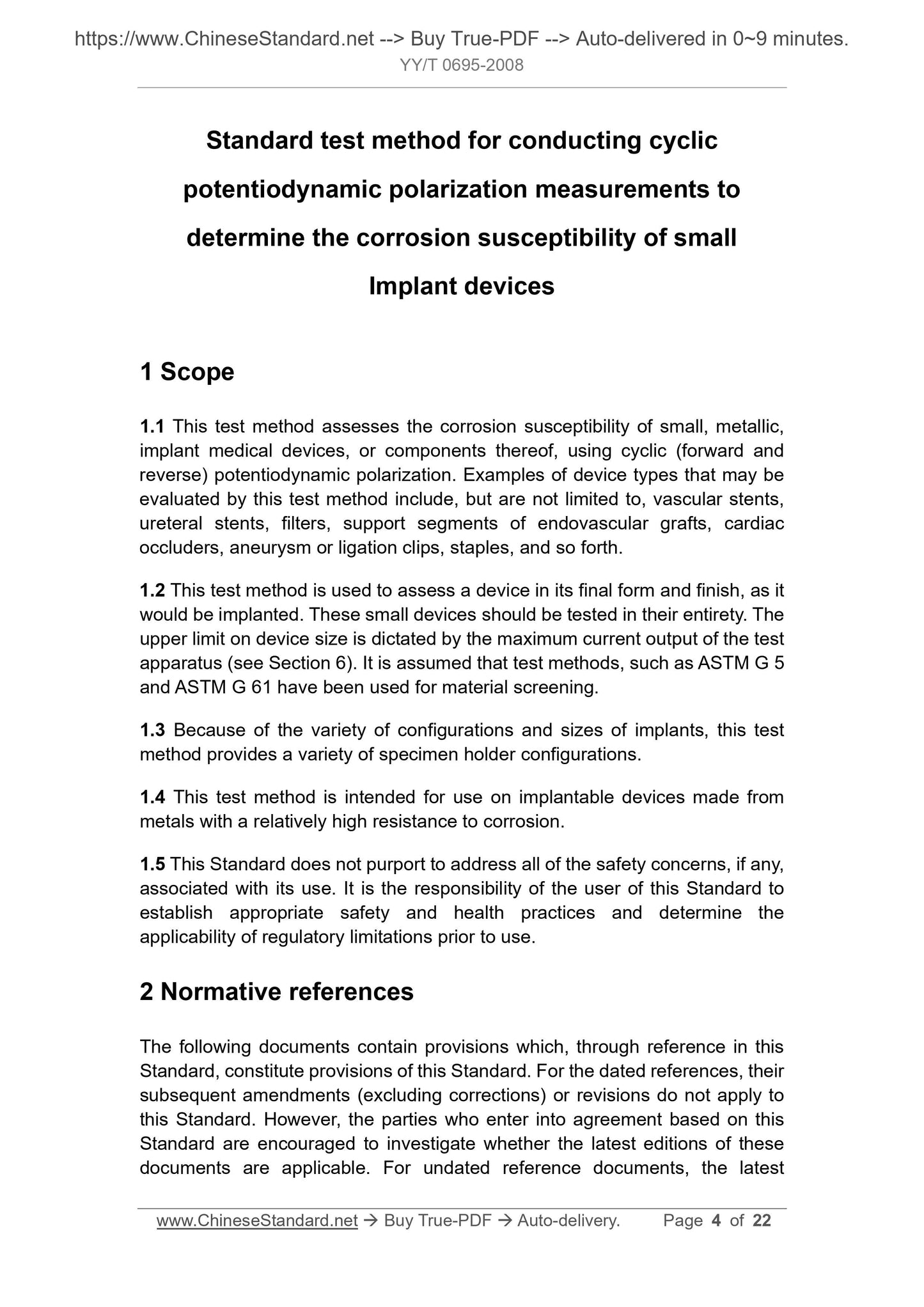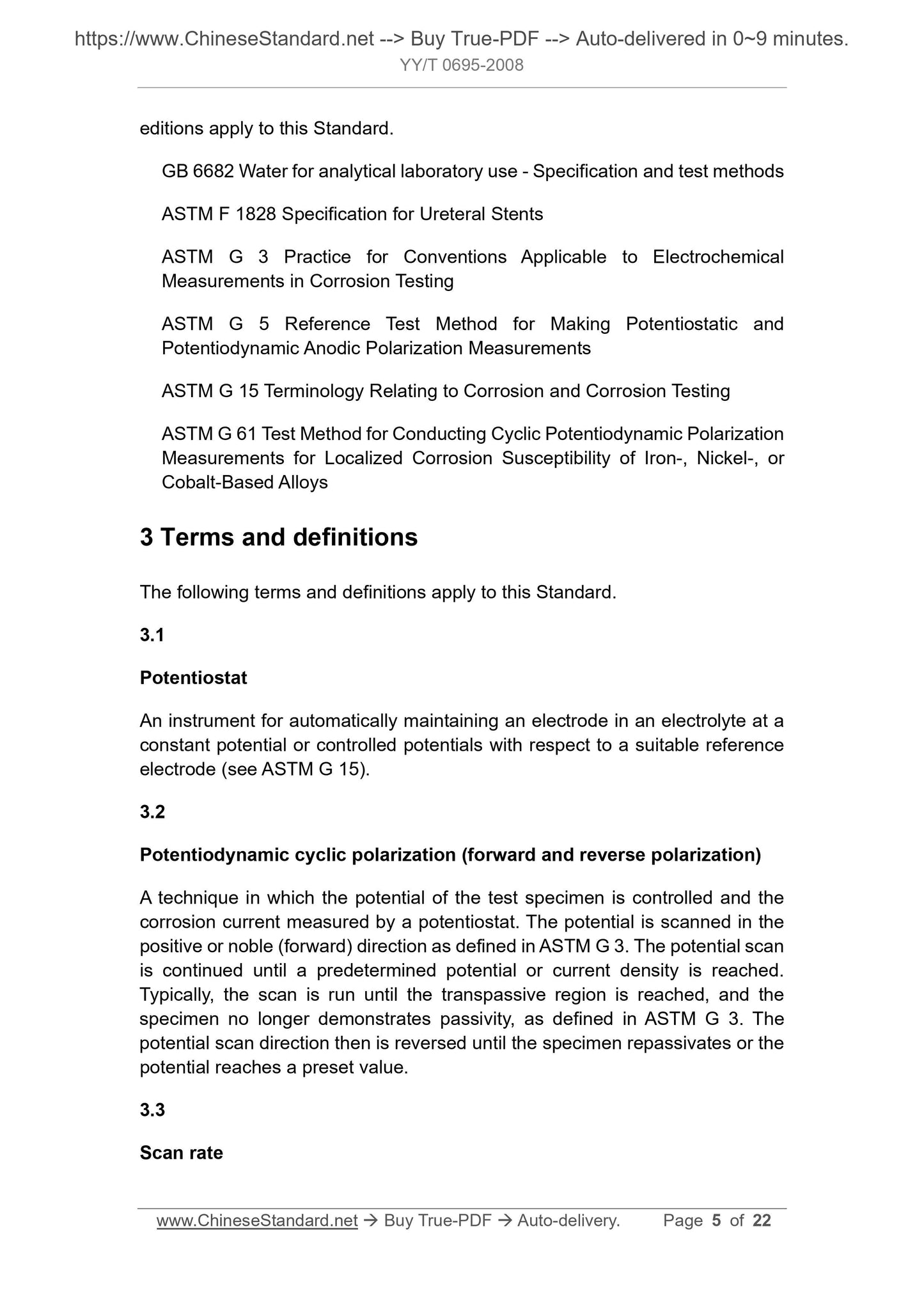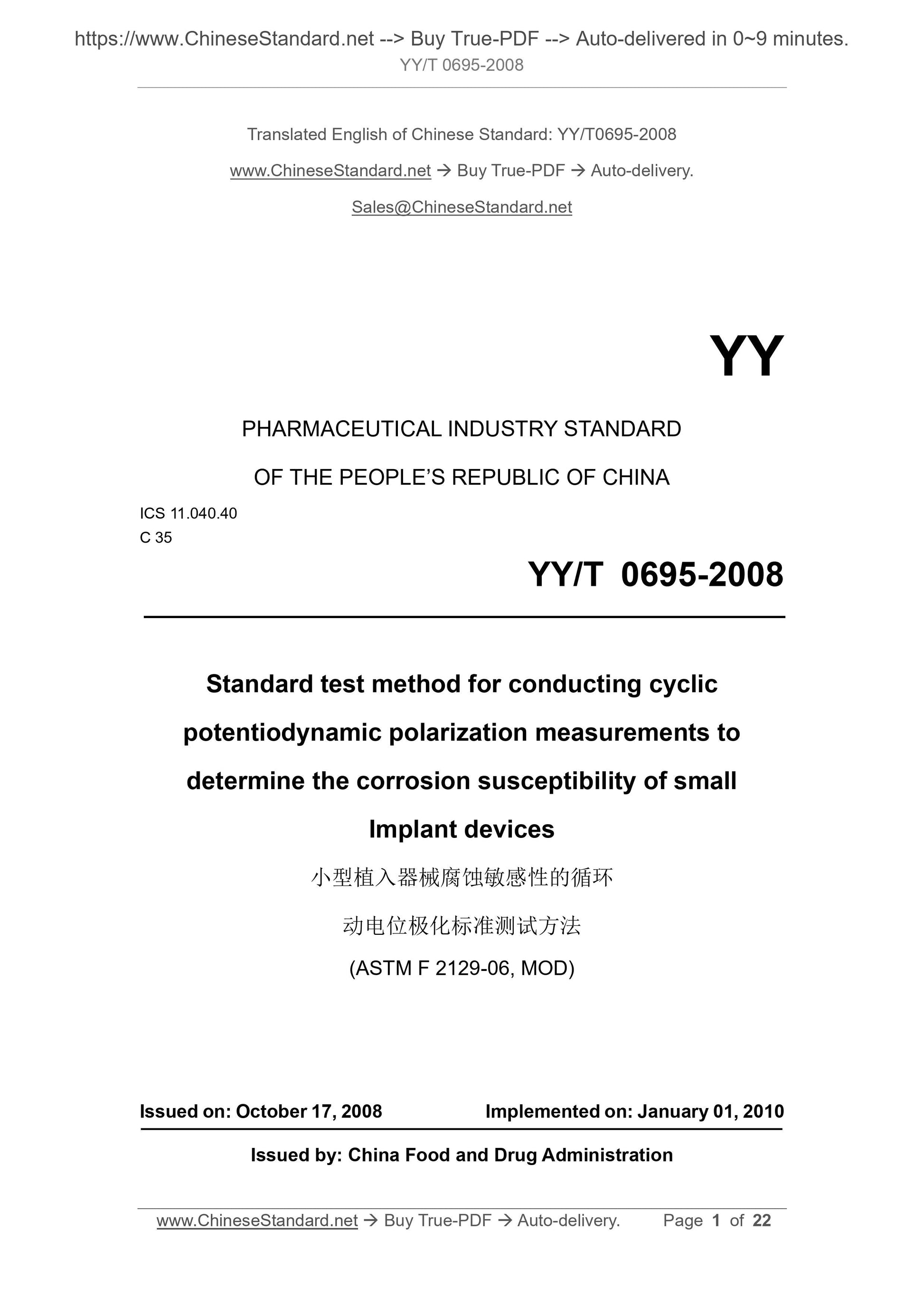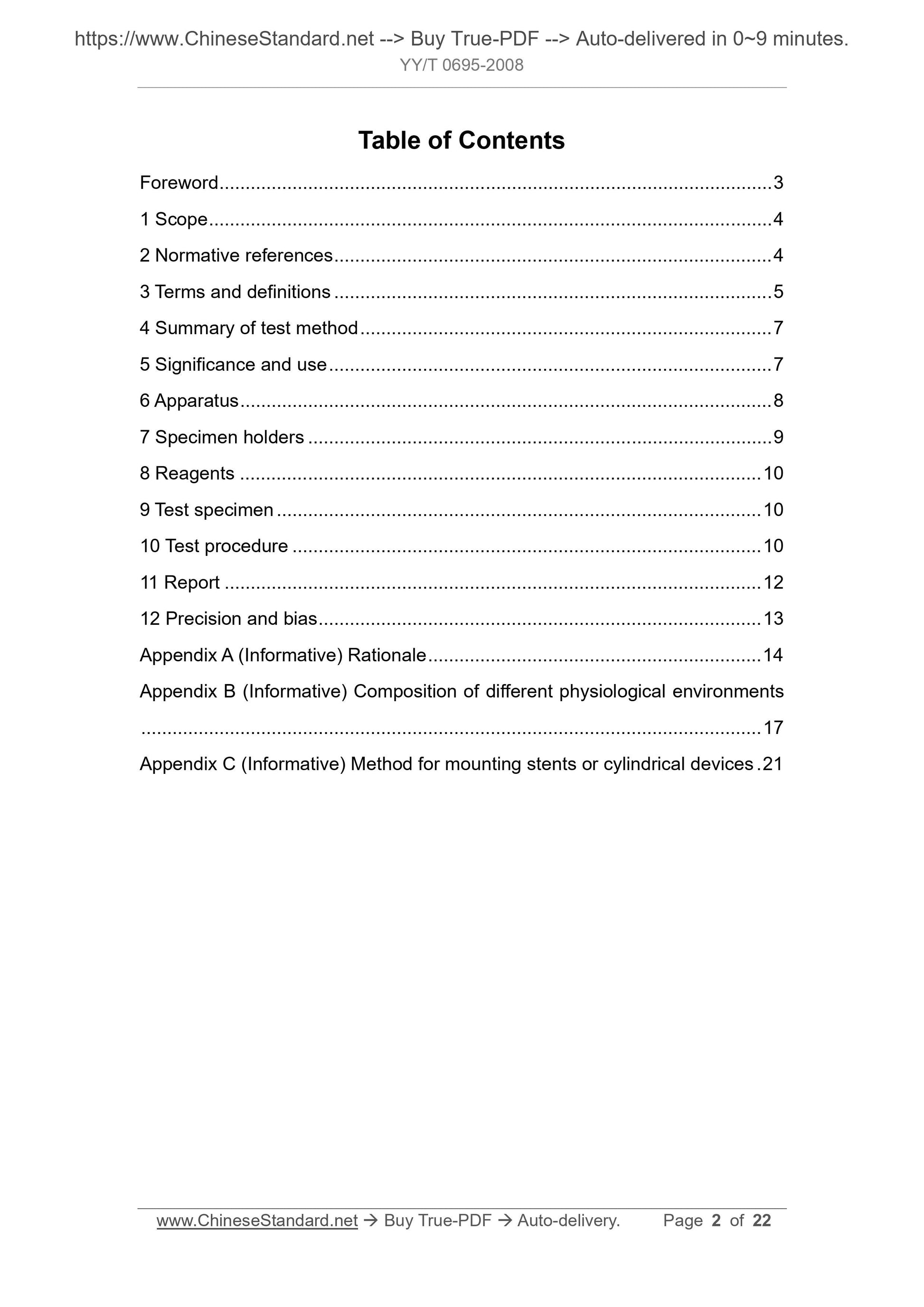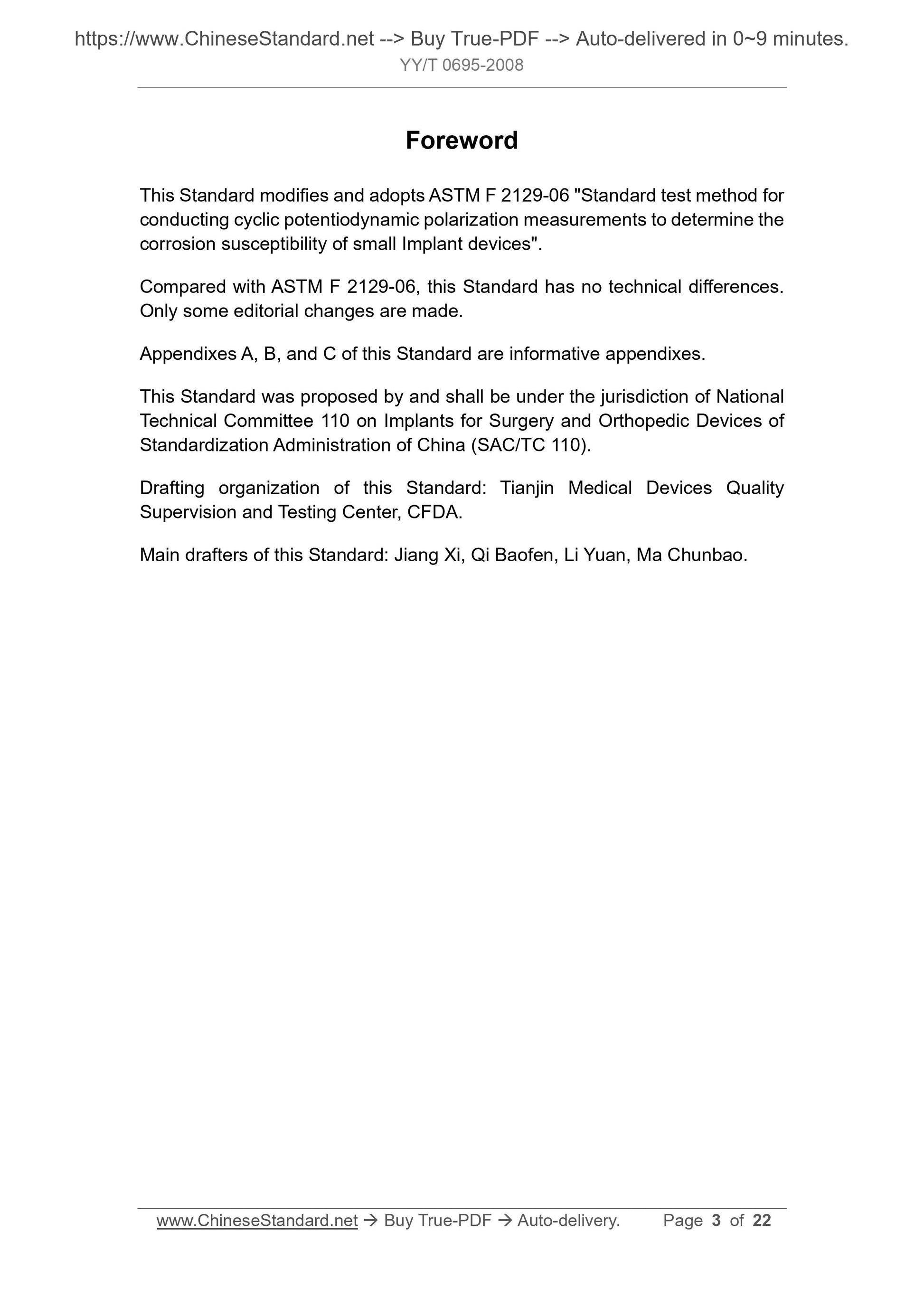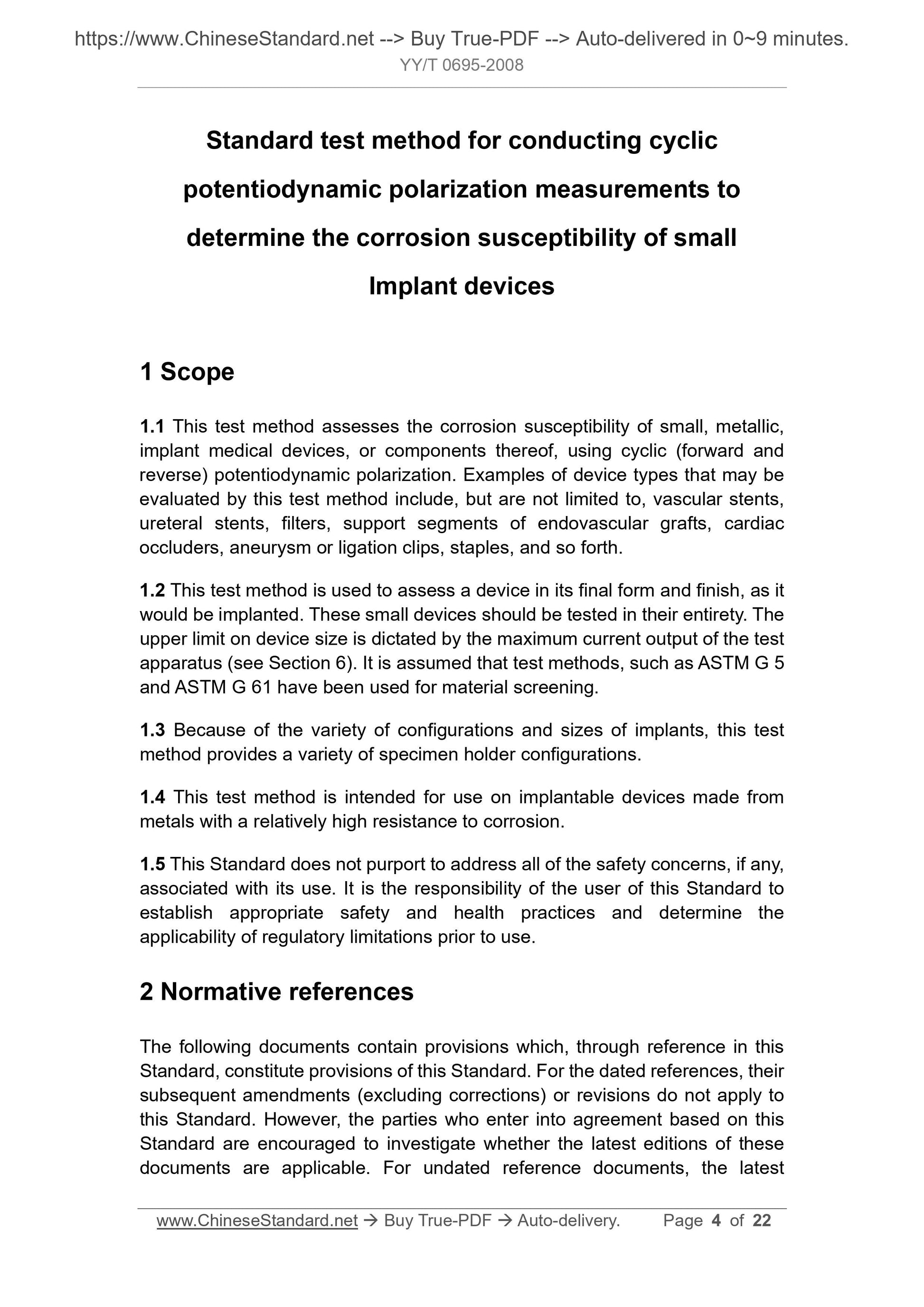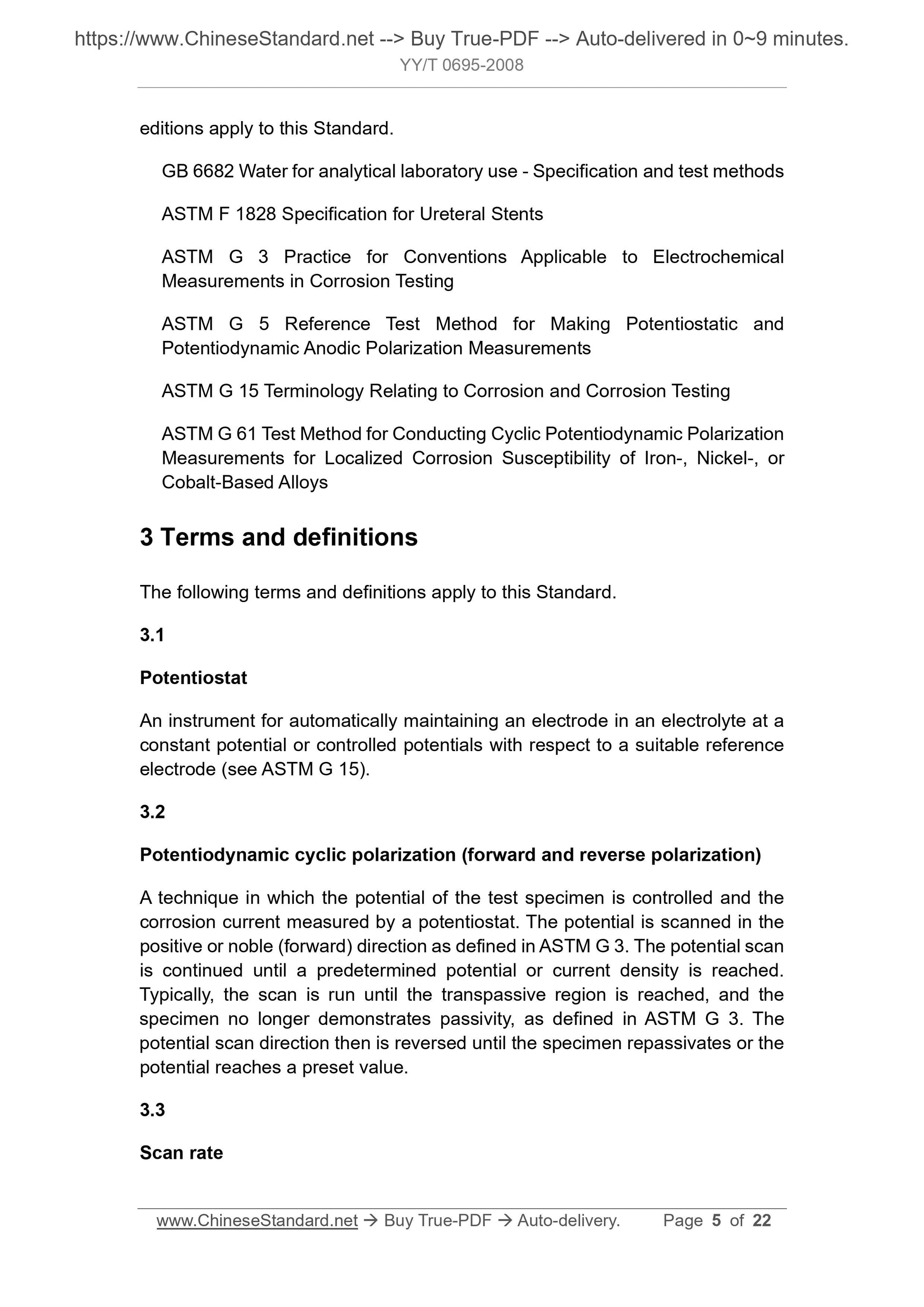1
/
of
5
www.ChineseStandard.us -- Field Test Asia Pte. Ltd.
YY/T 0695-2008 English PDF (YY/T0695-2008)
YY/T 0695-2008 English PDF (YY/T0695-2008)
Regular price
$215.00
Regular price
Sale price
$215.00
Unit price
/
per
Shipping calculated at checkout.
Couldn't load pickup availability
YY/T 0695-2008: Standard test method for conducting cyclic potentiodynamic polarization measurements to determine the corrosion susceptibility of small lmplant devices
Delivery: 9 seconds. Download (and Email) true-PDF + Invoice.Get Quotation: Click YY/T 0695-2008 (Self-service in 1-minute)
Newer / historical versions: YY/T 0695-2008
Preview True-PDF
Scope
1.1 This test method assesses the corrosion susceptibility of small, metallic,implant medical devices, or components thereof, using cyclic (forward and
reverse) potentiodynamic polarization. Examples of device types that may be
evaluated by this test method include, but are not limited to, vascular stents,
ureteral stents, filters, support segments of endovascular grafts, cardiac
occluders, aneurysm or ligation clips, staples, and so forth.
1.2 This test method is used to assess a device in its final form and finish, as it
would be implanted. These small devices should be tested in their entirety. The
upper limit on device size is dictated by the maximum current output of the test
apparatus (see Section 6). It is assumed that test methods, such as ASTM G 5
and ASTM G 61 have been used for material screening.
1.3 Because of the variety of configurations and sizes of implants, this test
method provides a variety of specimen holder configurations.
1.4 This test method is intended for use on implantable devices made from
metals with a relatively high resistance to corrosion.
1.5 This Standard does not purport to address all of the safety concerns, if any,
associated with its use. It is the responsibility of the user of this Standard to
establish appropriate safety and health practices and determine the
applicability of regulatory limitations prior to use.
Basic Data
| Standard ID | YY/T 0695-2008 (YY/T0695-2008) |
| Description (Translated English) | Standard test method for conducting cyclic potentiodynamic polarization measurements to determine the corrosion susceptibility of small lmplant devices |
| Sector / Industry | Medical Device and Pharmaceutical Industry Standard (Recommended) |
| Classification of Chinese Standard | C35 |
| Classification of International Standard | 11.040.40 |
| Word Count Estimation | 13,142 |
| Date of Issue | 2008-10-17 |
| Date of Implementation | 2010-01-01 |
| Quoted Standard | GB 6682; ASTM F1828; ASTM G3; ASTM G5; ASTM G15; ASTM G61 |
| Adopted Standard | ASTM F2129-2006, MOD |
| Regulation (derived from) | SFDA [2008] No. 605 |
| Issuing agency(ies) | State Food and Drug Administration |
| Summary | This standard applies to the expanded stent diameter can occur before and after plastic deformation of a material of the stent. Evaluation of the final product in the form of implants. This test method using cyclic (forward and reverse) potentiodynamic polarization evaluation implantable medical devices or small metal parts corrosion susceptibility. This test method can be evaluated equipment includes but is not limited to the following products: vascular stents, urethral stents, filters, endovascular graft support member, cardiac occluders, aneurysm clips and ligating clip, U-shaped nails. These small devices should be tested in their entirety. Equipment size limit depends on the maximum output current test instrument (see Chapter 6). Considered herein as ASTM G5 and ASTM G61 test method can be used for screening test material. Because implants of different structures and sizes, this test method provides a range of sample fixture structure. This test method is applied to the high corrosion-resistant metal material may be made of implantable devices. This standard does not attempt to have all of the security issues involved in elaborate, even if necessary, should be combined with its use. Establish appropriate safety and health practices, as well as in the application before the explicit administrative permissions are the standard user's own responsibility. |
Share
